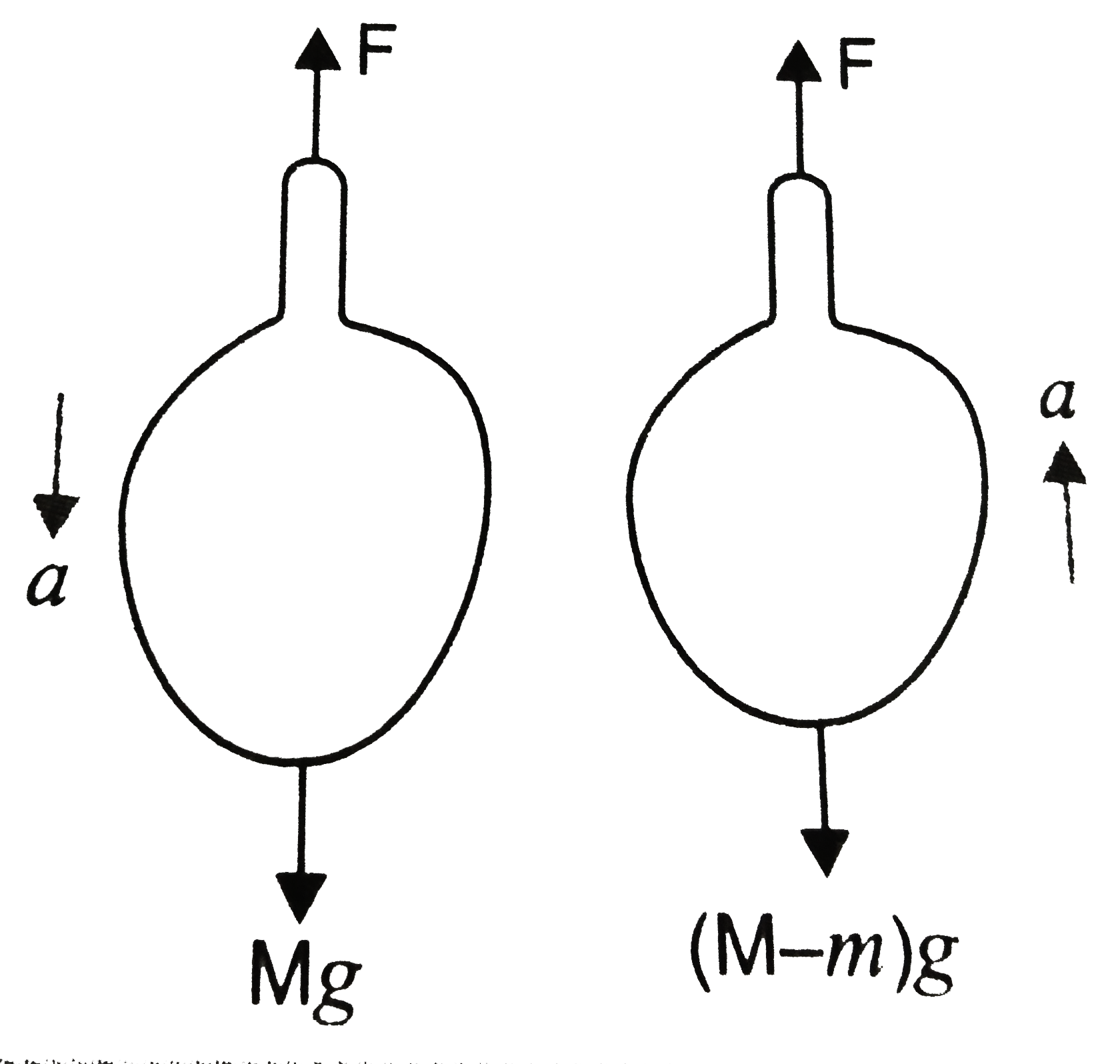A balloon with mass m is descending down with an acceleration a (wherea<g) . How much mass should be removed from it so that it starts moving up with an acceleration a?
Let the retarding force acting on the ballon in vertically upwards direction be F
When the ballon is descending down with acceleration its equation of motion can be written as
Ma=Mg−ForF=mg−Ma
Let a mass m be removed from the balloon As it moves up with an acceleration a as shown in its equation of motion can be written as
(M−m)a=F−(M−m)g
using (i) Ma−ma=Mg−Ma−Mg+mg
2Ma=m(g+a)
m=2Mag+a
 .
.
Topper's Solved these Questions
- BOOK - PRADEEPCHAPTER - LAWS OF MOTIONEXERCISE - Value Based Questions with Answers5videos
LAWS OF MOTION
- BOOK - PRADEEPCHAPTER - LAWS OF MOTIONEXERCISE - Multiple Choice Questions42videos
LAWS OF MOTION
- BOOK - PRADEEPCHAPTER - LAWS OF MOTIONEXERCISE - Short Answer Questions35videos
LAWS OF MOTION
- BOOK - PRADEEPCHAPTER - KINEMATICSEXERCISE - 1 NCERT Comprehension4videos
KINEMATICS
- BOOK - PRADEEPCHAPTER - MATHEMATICAL TOOLSEXERCISE - Fill in the blanks5videos
MATHEMATICAL TOOLS
Similar Questions
A balloon with mass m is descending down with an acceleration a (wherea<g) . How much mass should be removed from it so that it starts moving up with an acceleration a?
View SolutionA balloon of mass m is descending down with an g/2 acceleration How much mass should be removed from it so that it starts moving up with same acceleration
View Solution
Knowledge Check
- Question 1 - Select One
A balloon with mass m is descending down with an acceleration a where a
A2mag+aB2mag−aCmag−aDmag−a - Question 2 - Select One or More
A balloon of mass m is rising up with an acceleration a.
AThe upthrust on the balloon is m(g+a).BThe upthrust on the balloon is ma.Cma/(2a+g) mass must be detached in order to double its acceleration.Dm/2 mass must be detached in order to double its acceleration. - Question 3 - Select One
A balloon of mass M and a fixed size starts coming down with an acceleration f(fltg). The ballast mass m to be dropped from the ballon to have it go up with an acceleration f. Assuming negligible air resistance is find the value of m
A(Mg+f)fBMf2(g+f)C(2Mfg+f)Dm(g+a)g
A balloon of mass m is descending down with an acceleration How much mass should be g2 removed from it so that it starts moving up with same acceleration?
View SolutionA balloon with mass m is descending down with an acceleration a (wherea<g) . How much mass should be removed from it so that it starts moving up with an acceleration a?
View SolutionA balloon carring some sand is moving down with a constant acceleration a0. How much mass of sand should be removed, so that the balloon move up with same acceleration?
View SolutionA balloon of mass M is descending at a constant acceleration α. When a mass m is released from the balloon it starts rising with the same acceleration α Assuming that its volume does not change what is the value of m. ?
View SolutionA balloon of mass M is descending at a constant acceleration α. When a mass m is released from the balloon it starts rising with the same acceleration α . Assuming that its volume does not change, what is the value of m?
View Solution

